The first ladder we encountered was a horizontal one, spanning the river that ran through the gorge. My head swam slightly as I looked down at the water flowing underneath me.
“Don’t look down - just look at the next rung. Always look at the next rung,” our guide Patrik advised from behind me.
I did what he advised, concentrating on where I needed to place my feet. But even so, I felt slightly dizzy when I stepped back onto the path. A body is at its most vulnerable when there’s nothing to hold onto.

We were in Slovakia, traversing Suchá Belá Gorge in Slovak Paradise National Park - a landscape which was, so far, living up to its name. Trees bedecked with the tender leaves of spring rustled gently on either side of the path. The river running alongside the path was crystal clear, gleaming gently in the dappled light. Sometimes the path even crossed the river, meaning we had to hop from one boulder or fallen log to another. Let’s just say it’s a good thing my hiking boots were waterproof.
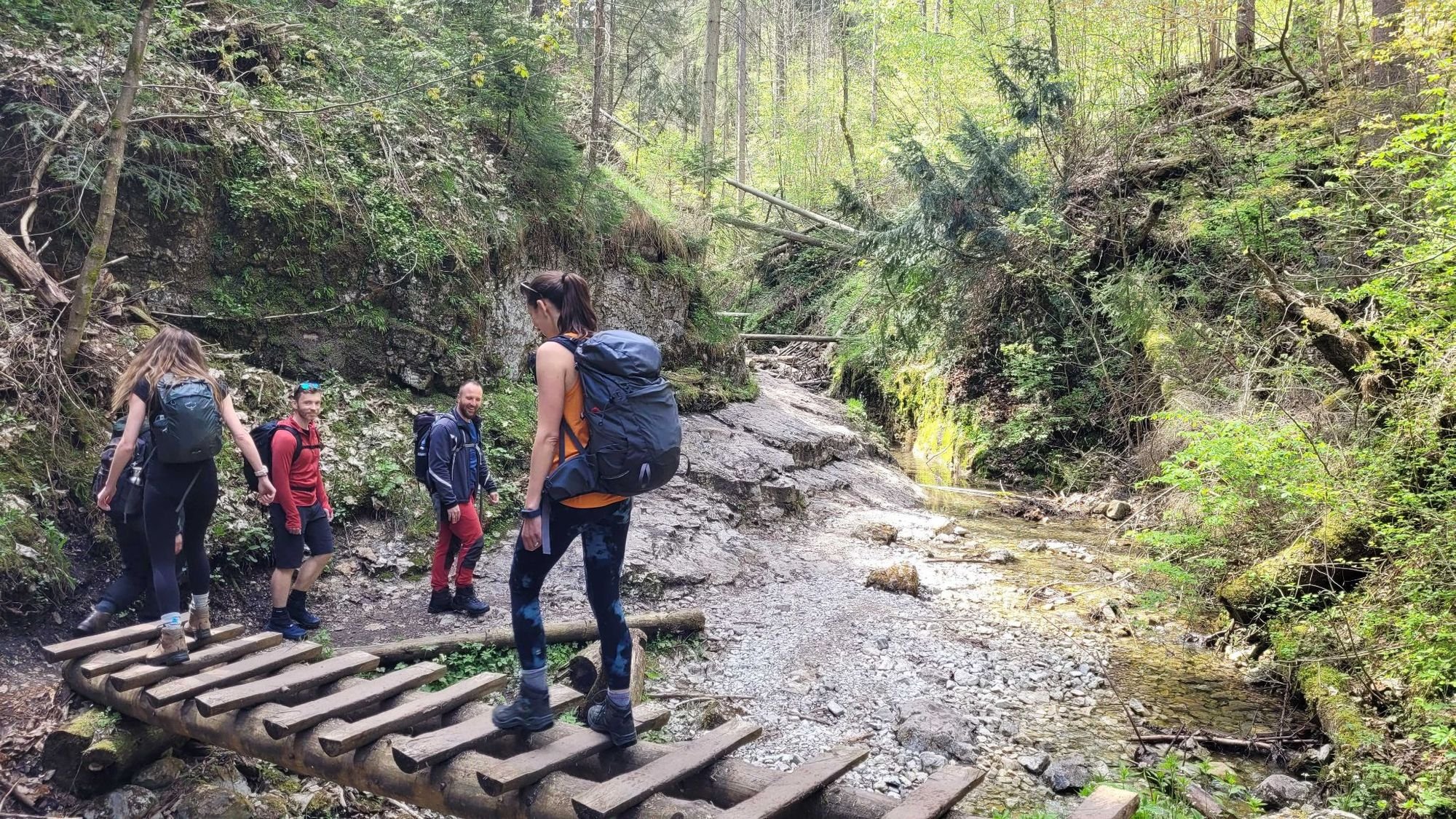
The landscape slowly changed as we ventured farther into the gorge. Limestone walls rose up on either side of us, the rough surface speckled with moss and curling ferns. But it wasn’t always the view that occupied most of our attention, for this was no ordinary hiking trail. Not only did it require multiple river crossings, but the route also consisted of metal footholds hewn into the rock, of narrow ledges with chains to clutch onto, and ladders to climb.
Until 1900, Suchá Belá was considered inaccessible. It was Martin Roth, mountaineer and pioneer of tourism in the Slovak Paradise region, who led the first foray into the gorge. The group managed to reach the Misové Waterfall before a sheer limestone wall forced them to turn back. Over the next decade, they began to mark a trail up to the falls - in 1910, Alexander Mervay finally led a group beyond them, and completed the entire gorge hike.
Don’t look down - just look at the next rung. Always look at the next rung
Interest in hiking Suchá Belá began to grow. Locals from the nearby villages realised that placing a ladder next to each waterfall would enable safe passage through the gorge. In the 1970s, they raised funds to install ladders and other fixtures. These local people are still responsible for keeping this infrastructure in good condition.
Like Roth and his group, we made our way along the gorge - it slowly narrowed, until we found ourselves in a high-walled natural chamber. The Misové Waterfall gushed down through it, splashing into the river. Our attention was taken up by the two long ladders, stretching diagonally up to the top of the gorge. We could see edges of a small metal walkway at the top, but most of it was out of sight. For a brief moment I imagined an Escher-style scenario, with more and more ladders stretching up out of sight.

There was no turning back (and I mean that literally - you’re only allowed to walk the route in one direction, which avoids groups trying to pass each other on narrow ledges and bridges). And so we gathered around the base of the first ladder, while our guide demonstrated how to climb it. There were two options. One was to climb standing up, holding onto the chain drilled into the rock wall - you had to lean back slightly, in a similar stance to abseiling. The other one was to climb it on all fours, reaching for the rungs with your hands. One way looked slightly cooler, the other was slightly easier. I went for the easier option.
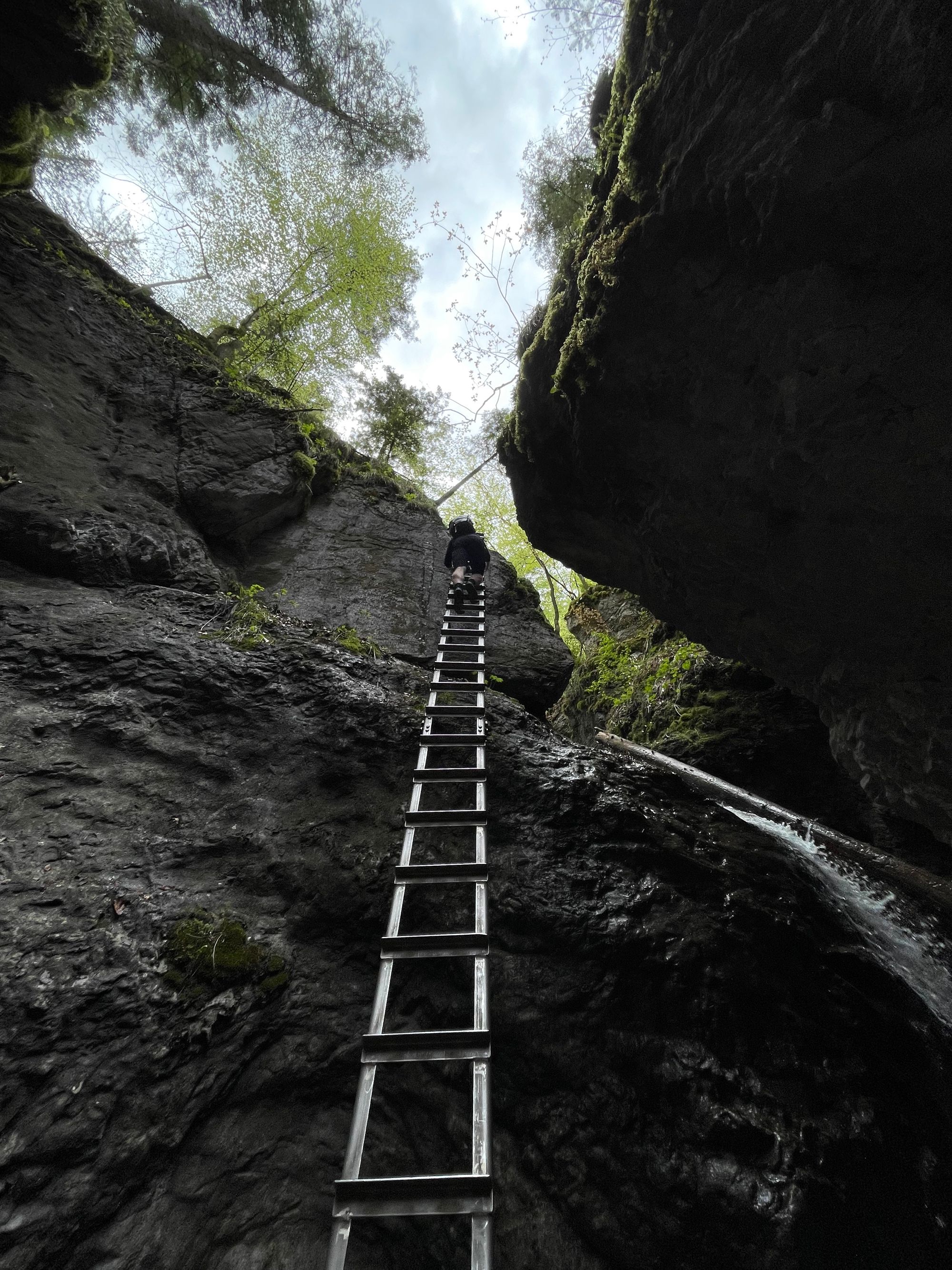
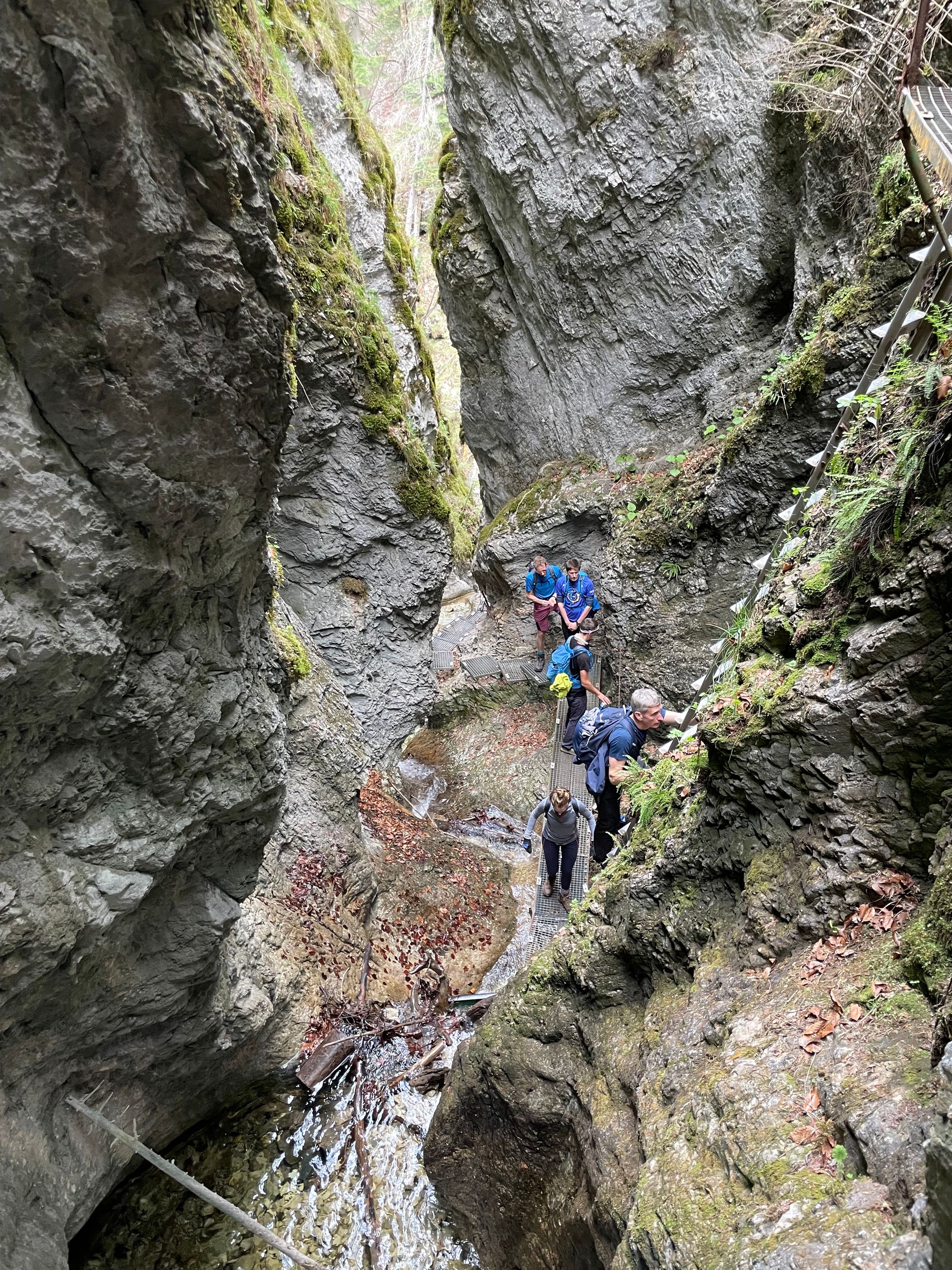
Ladders on the Sucha Bela Gorge trail. Photos: Lauren Roitman/Much Better Adventures
The first step was the scariest, the rung slippery with spray from the waterfall. But once I started climbing, I felt my nervousness subside. I began to embrace the adventure of it, climbing up a gorge on a ladder past a waterfall. When I arrived at the top, and stepped onto the walkway, I experienced a giddy sense of achievement.
I was very careful not to look down
The fun wasn’t over yet. The walls at the top of the gorge were much closer together, and as I made my way across the walkway, they grew narrower still, until it felt as if I were walking through a tunnel. As we rounded the corner, the walkway disappeared, to be replaced with a series of metal stepping stones drilled into the gorge wall. The river rushed below us, having increased in size and speed. As I picked my way across the footholds, holding tentatively onto the wall for support, I was very careful not to look down.
The route continued to offer up surprises, in the form of chains, ladders and stepping stones. It was utterly absorbing - like the obstacle courses you do as a child. By the time we reached the end of it, and the path became a more conventional dirt track leading through a forest, I was tired out - not so much from the physical challenge, but from the problem-solving element necessitated by the trail.
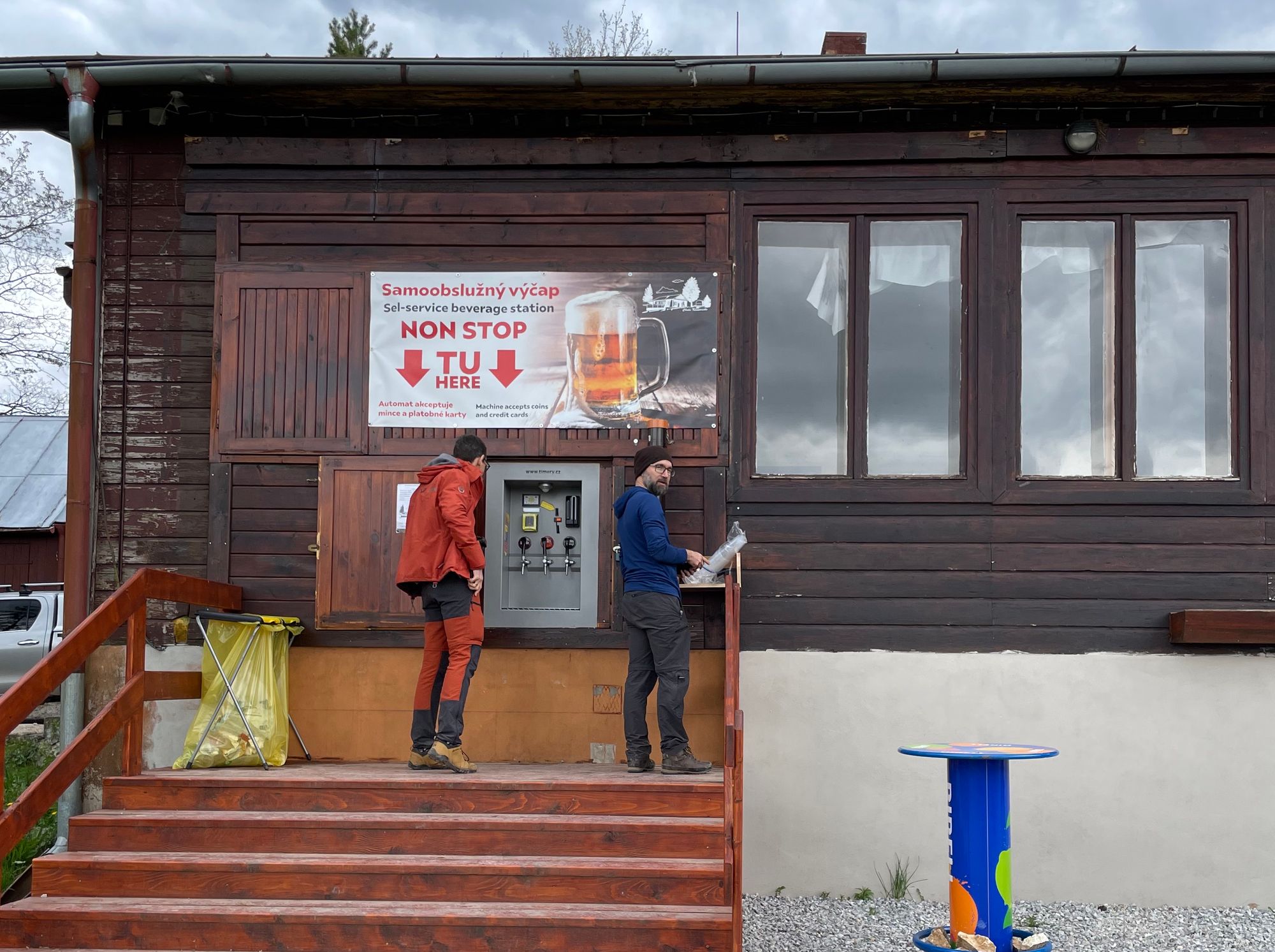
We broke for lunch in a meadow that looked like a scene from The Sound of Music. The ground sloped gently downwards, grass speckled with yellow wildflowers, and bordered with lines of green spruce trees. At the bottom of the hill was Kláštorisko, the ruins of an ancient monastery once inhabited by Carthusian monks, an order renowned for the vow of silence they take. In the background, at the horizon, the snowcapped peaks of the Tatras Mountains were visible. Easy to imagine days here spent in quiet contemplation. But less confined by asceticism, our group discovered the self-service beer tap located at the main rest hut, and did anything but.
The next day, after a breakfast including everything from strudel to fresh carrot juice, we journeyed to the Tatras Mountains, jagged stony peaks still carpeted in snow this early in the year. That meant they were impassable - at least, to hikers without technical climbing knowledge - so we’d have to content ourselves with looking up at the summits.
The path we were taking wound through the Velicka Valley and followed part of the Tatranska Magistrala trail through the Tatras. Despite its proximity to Suchá Belá Gorge, the two trails were vastly different. Today’s trail saw us following a path alongside a river of glacial meltwater, gushing over large boulders and fallen tree trunks, creating clear, ice-cold pools. On either side of us, spindly birches and spruce trees reached up to an overcast sky.
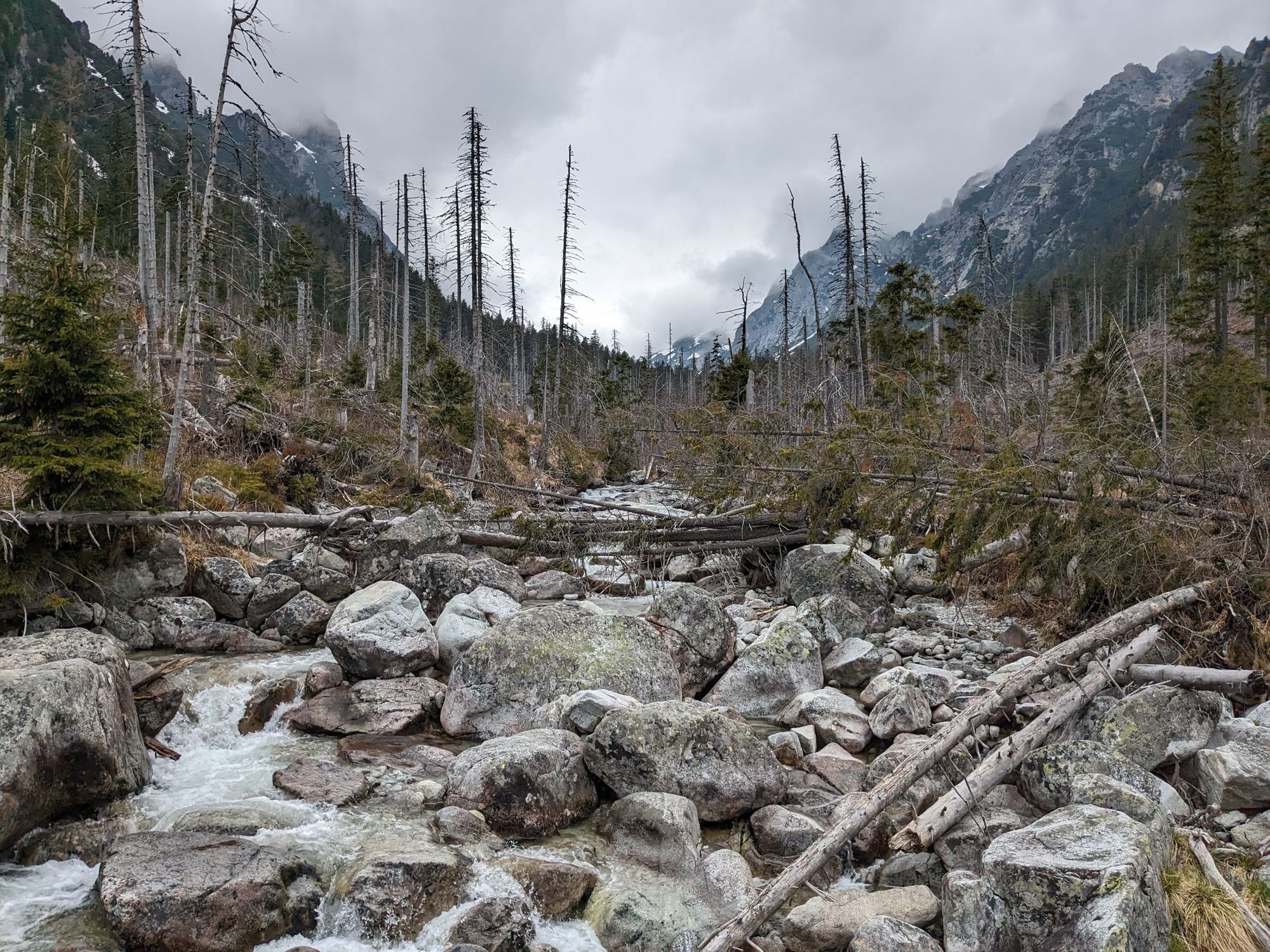
Through breaks in the trees we glimpsed the austere silhouette of Gerlachovsky Peak, one of the highest peaks in the Tatras. We stopped frequently to admire the waterfalls cascading down the rock, and the stony peaks looming up in the distance.
As we walked, I fell into conversation with one of the guides, Tom. He began telling me more about Slovakia, a country that I’d known little about until this trip.
On either side of us, spindly birches and spruce trees reached up to an overcast sky
“In the old days, when there was Communism, people were all employees of the state,” he said. “They were given a job and just told what to do,” he said. “But now we can do what we want. I used to work in tech but I chose to swap it for a job where I’m outside, surrounded by nature. We have a saying in Slovakia - ‘change is life’.”
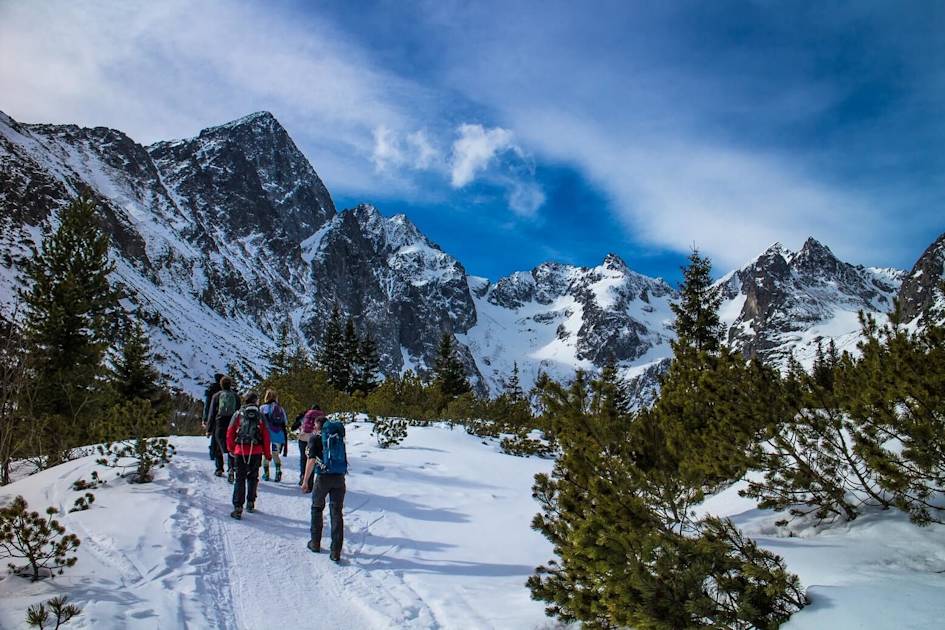
After the day’s walk, when our guides drove us to a thermal bath complex they said was visited by the locals. Slovakia has an abundance of natural hot springs, and spa complexes have existed in the country since the 13th century, the healing powers of the mineral-rich water being much touted. Initially, these spas were the province of nobility and the wealthy elites. But they were nationalised during Communist rule - considered part of the national health system - and became accessible to all. While we couldn’t comment on their healing properties, the warm water did soothe our aching calf muscles.
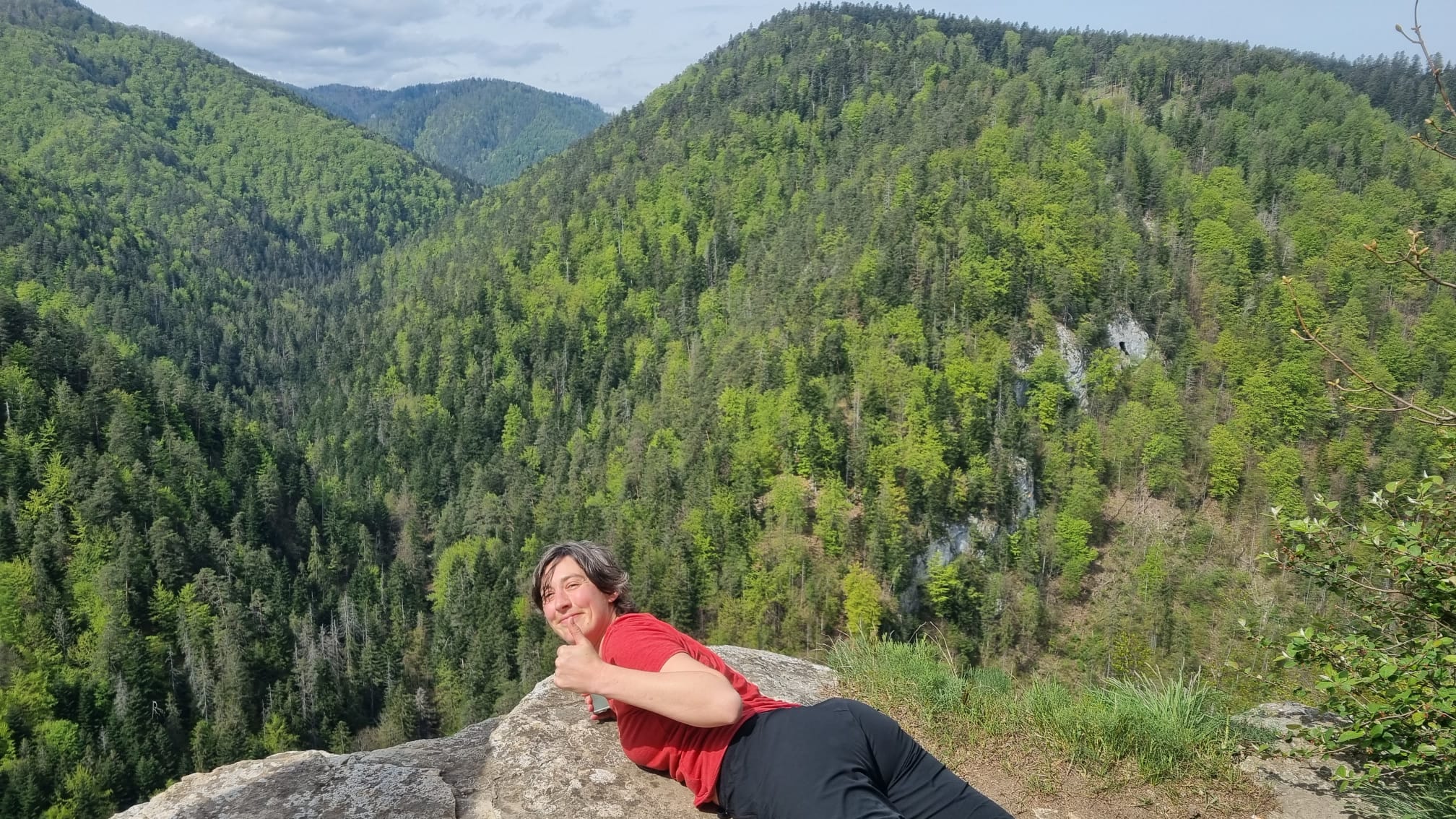
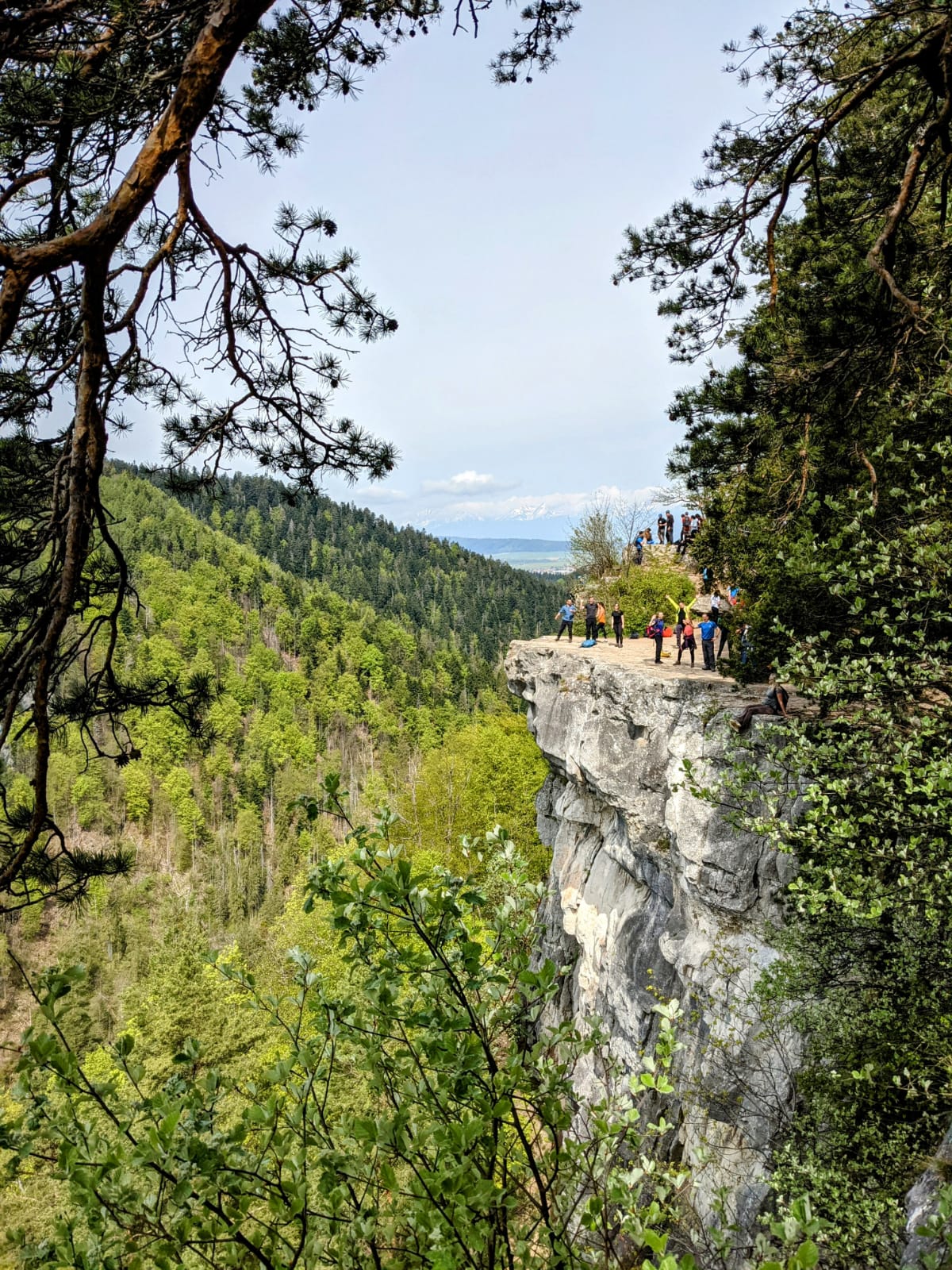
(Left) the author poses. Photo: Marta Marinelli. (Right) Slovak Paradise National Park viewpoint. Photo: Megan Devenish.
Our final morning saw us returning to Paradise National Park. As we hiked through the forest, our guide Martin gestured to a high rock shelf to our right.
“That’s where you’re going,” he told us.
The trail led us up through a forest and across a gently sloping meadow. From there, it wound its way to the rocky ledge we’d spotted earlier. We were treated to a beautiful view of forested hills, stretching all the way to the horizon - a tapestry of different shades of green.
I wasn’t sure what I had expected from Slovakia, but it wasn’t this. The land felt so vibrant; the grass was soft and springy, the trees exuberantly green. A landscape that reflected the soul of Slovakia, a country alive with possibilities and full of surprises.
Inspired? Come Adventure Hiking in Slovakia with us, or join us to Hike Slovakia's High Tatras Mountains in a Weekend.



